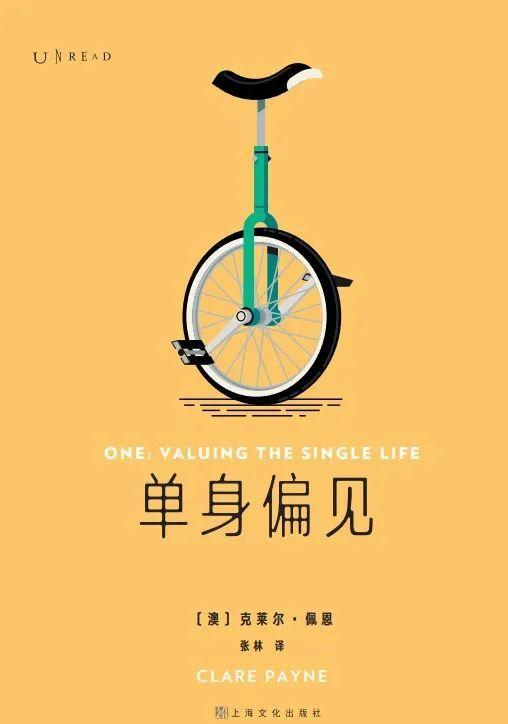
Books Reviewed:
Title: Singles Prejudice
Author: (Australia) Claire Payne
Translator: Zhang Lin
Publisher: Shanghai Culture Publishing House, United Skyline
Publication date: December 2021
Spring Festival is always associated with labels such as happiness, happiness, and reunion. At such times, the ridicule and self-mockery surrounding singles can always circulate in various ways. When friends and family get together, single people sometimes seem particularly out of place, because no matter what they talk about, they can turn the topic to marriage.
The newly published book "Single Prejudice" points out that prejudice against single people and even a certain degree of discrimination are quite prevalent around the world.
This is first of all because the population growth rate of developed countries and emerging market countries represented by China has stagnated. In the demographic structure, the number of single people and single families has increased significantly. While there is no shortage of examples of single fathers or mothers raising their children alone, many small families are indeed made up of one person. In general, the more singles there are, the lower the fertility rate does.
A few years ago, according to statistics from some countries, including the mainland, there were at least 300 million single people worldwide. In the United States, the number of single-person households rose from more than 10 million to 35 million from 1960 to 2014. Single-person households in Tokyo, Japan, account for 45.8%. In 2016, 28% of UK households had only one person – Canada's 2016 statistics also show that 28.2% of households have only one person. In India, the number of single women increased from 51.2 million in 2001 to 71.4 million in 2011, including widowed women, divorced women, adult unmarried women and women abandoned by their husbands.
"Singles Prejudice" asks: Why are more and more people choosing to be single relatively speaking? One factor is that people are increasingly reluctant to give in. In the past, when two people got married, they could work together to run a good family. But this premise is now becoming more and more fragile and even false, because many people can earn enough money to support themselves.
Moreover, the increasing cost of education and health care, coupled with high housing prices, means that the cost of raising children even exceeds the combined force of two people getting married. In other words, if housing prices in some countries and regions continue to be high, and the cost of raising children is still so expensive, this will greatly hinder the age-appropriate population from getting married and having children.
There is also an invisible factor. For a long time, whether in Asian countries such as China, Japan, or Europe and the United States, women have been the main bearers of domestic work. But because housework is not directly calculated in monetary terms, a large number of men stubbornly believe that they are the only ones "raising their families." Women's assumption of housework, as well as the physical cost of childbearing and child-rearing, as well as the loss of workplace growth and entrepreneurial development, are still not widely recognized by mainstream social concepts at the moment of feminism. There is a saying called "can't afford to provoke, can hide", and some women who can achieve financial independence also refuse to pass marriage and become the husband's child-bearing machine.
The growth of the single population and the number of single families has become a demographic phenomenon that has aroused widespread concern in recent years. Psychologists worry that loneliness from being single becomes a common symptom — the problem is that loneliness is not directly linked to being single or not. In addition, sociologists and economists have realized that single people prefer to eat out, work out at the gym, attend classes, attend public events or participate in volunteering than married people. Officials in many countries, such as the mainland and the United States, are committed to promoting the increase in marriage rates through propaganda and policy guidance.
A paradoxical fact is that only by removing the discriminatory concepts of single people and single families in the official and social culture, and acknowledging that whether they are single or married and have children at the right age, or married late, or married without childbearing, or do not cross the threshold of marriage but couples live stably for a long time, or single parents raise children alone and other marriage choices are normal, each choice is not morally negligent or physical, psychological problems, and is not superior to other choices. Allowing single people to make marriage and love choices relatively easily is conducive to reducing the proportion of single families and reducing the proportion of single people in the total population.
A related problem is that some countries and regions have set direct and indirect thresholds for divorce for fear of a high divorce rate (compared to the depressed marriage rate) and a decrease in fertility, trying to reduce divorce through persuasion, obstruction and other means. In fact, this has caused unhappy marriages, especially marriages full of domestic violence and cold violence, which have become sunk costs that the parties cannot get rid of - every similar case will at least profoundly affect the marriage and love choices of those around them.